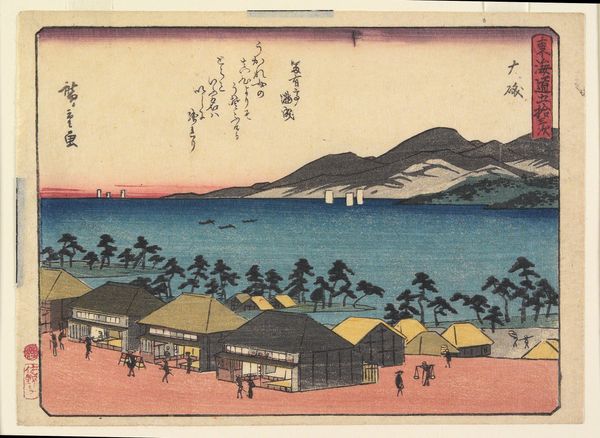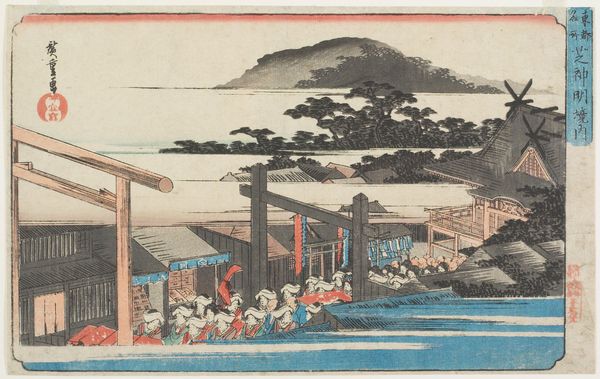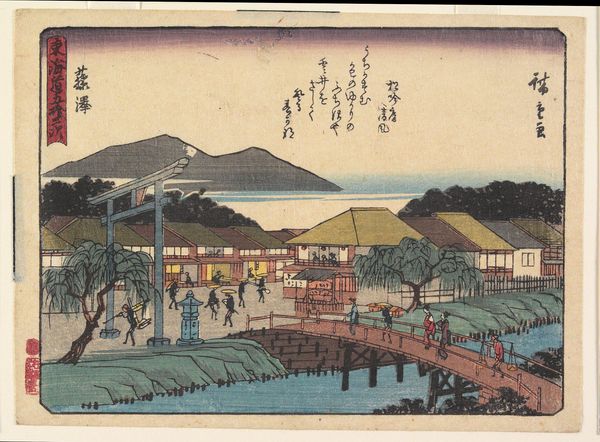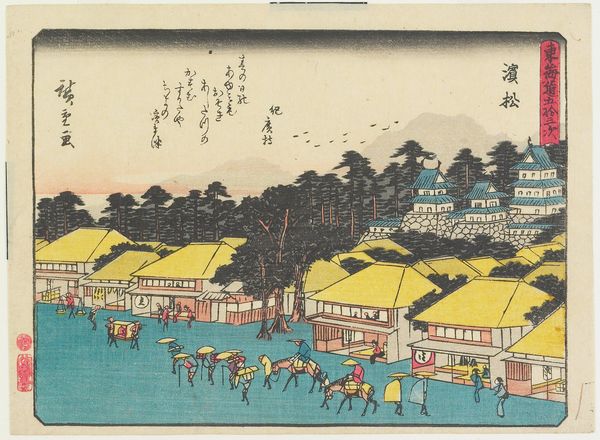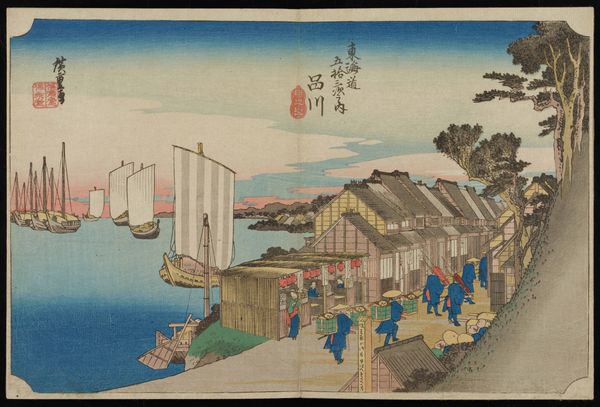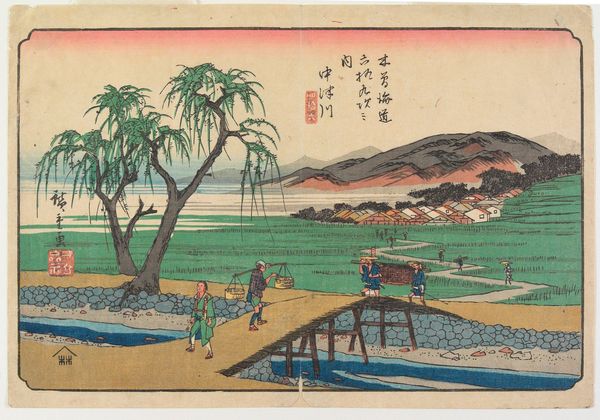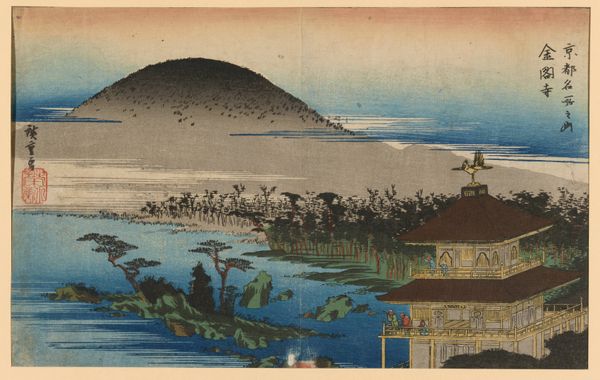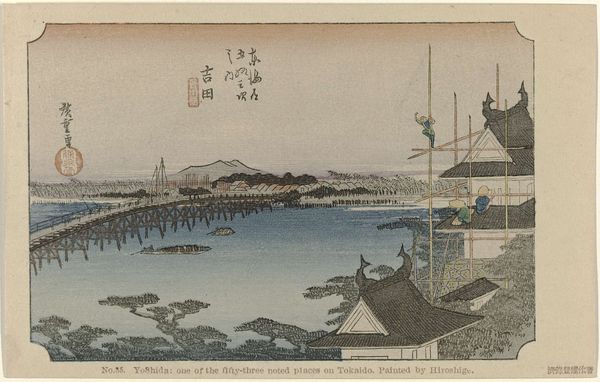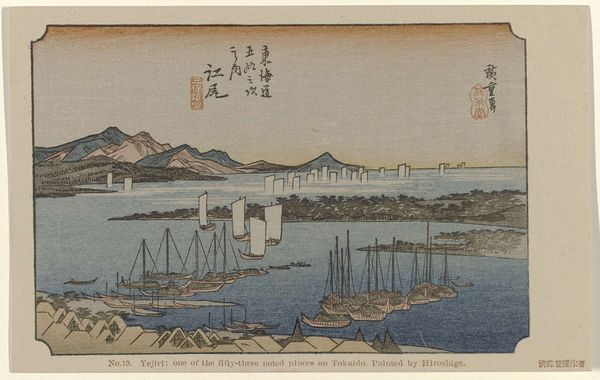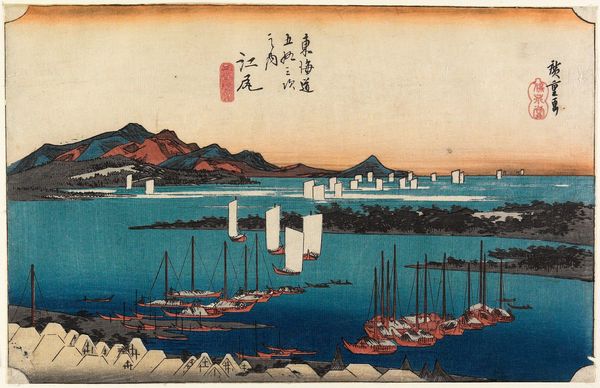
Dimensions: 6 x 8 3/8 in. (15.3 x 21.2 cm) (image)6 9/16 x 9 in. (16.7 x 22.8 cm) (sheet)14 x 17 15/16 in. (35.5 x 45.5 cm) (mat)
Copyright: Public Domain
Curator: Here we have "Ōtsu" a woodblock print from around 1840-1842, by Utagawa Hiroshige, part of the series Fifty-three Stations of the Tokaido Road. It’s now housed here at the Minneapolis Institute of Art. Editor: My first thought? The colours are doing all the heavy lifting. The flat planes of those ochre roofs against that muted, almost melancholic sky—it feels simultaneously serene and a little lonely. Curator: The Tokaido Road was a crucial route connecting Edo, modern-day Tokyo, with Kyoto. Hiroshige captured not just landscapes but the lives and rhythms of people along this arterial pathway. Each station was a microcosm of Japanese life. Editor: You know, the detail is almost incidental—all those tiny figures. It's less about precision, more about capturing the vibe, wouldn't you say? Like a memory half-formed. What strikes me is this almost painterly haze over everything, but created with carving and ink? Amazing. Curator: It’s interesting that you pick up on the ‘vibe’, because ‘ukiyo-e’, the style, means ‘pictures of the floating world.’ This wasn't necessarily about photographic realism; it's a meditation on ephemeral beauty. These images allowed the city dwellers, or chonin, of Edo period Japan to see their countryside, their culture reflected in art. Consider the boats in the harbour: commerce, yes, but also the promise of journeys, of possibilities. Editor: That melancholic quality, though…I feel it's woven into the composition itself. Even that splash of red script looks a bit wistful, a reminder of somewhere else, or maybe, someone else. It reminds you of impermanence doesn't it? That everything beautiful fades eventually. Like a souvenir purchased during an autumn journey, destined to gather dust and become a distant memory. It makes the landscape almost exist in a sort of suspended time, a specific place which contains all journeys. Curator: Well put. We could consider too how Hiroshige's approach differs so markedly from contemporary landscape paintings in the west. Here, human figures are completely enmeshed within nature, underscoring a vision of harmonious coexistence. It reflects aspects of the philosophical principles within Zen Buddhism as well as Shinto reverence. Editor: Maybe that's why the melancholic beauty works so well – a reminder of both journey and arrival, presence and absence, all contained within a single image. The Floating World, in a nutshell! Curator: Absolutely. Each element holds layers of symbolism, providing pathways to richer understandings of culture and history. Editor: It’s funny how such a simple image can unravel so many ideas, huh?
Comments
No comments
Be the first to comment and join the conversation on the ultimate creative platform.
